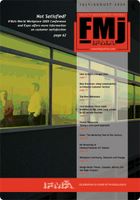IFMA & Workplace Continuity, Telework and Change
 We just received some fantastic news. Our paper, Workplace Continuity, Telework and Change, was published in the July/August issue of Facility Management Journal by the International Facility Management Association (IFMA).
We just received some fantastic news. Our paper, Workplace Continuity, Telework and Change, was published in the July/August issue of Facility Management Journal by the International Facility Management Association (IFMA). Subscription to the print publication or registration to the site is required to read the full article, but here's the introduction:
Fundamental changes in the workplace are happening today and are driven by a number of factors such as improvements in communication technology, the need to address inefficient management structures, and the desire to better manage risk. This is all taking place at a time where cost efficiency and competitiveness are paramount.
One of the more powerful factors impacting our early 21st century culture of work is the continuing explosive development of technology and the consequent revision of workplace attitudes and operations. The advance of technology has spawned a new generation of entrepreneurs who don’t need suits, ties, and standard office space to compete successfully in business. Their success has been a key catalyst in changing fundamental work patterns in many organizations. Not only did they eliminate the nine-to-five, five-day week in favor of an entirely new system of time management, they used the tools of new technology to change the way work was done. This has become an indelible blueprint for success across a wide spectrum of industries.
For example, advances in remote technology – i.e. the tools and networks connecting people and work groups across wide areas – have dramatically contributed to this success. Email, for instance, has proven to be the singularly most important business tool since the single-line telephone and, along with other advances in remote technologies, has allowed organizations to better manage cost, create redundancy and make organizations more competitive.
Speaking of competition, technological advance also has spawned the globalization of services, communication, and labor pools. This has led to increased global competition and to business focus on more efficient management. One of the more visible results of this change in focus has been the downsizing in organizational hierarchies. This has made organizations flatter, improved the number of communication channels to managers, and marginalized the middle management role of informational gatekeeper between subordinates and top management.
An additional change agent is the impact of 9/11 which has led to increased emphasis on risk management and business continuity planning. Organizations have begun to consider new strategies to better manage risk and related workplace issues. As a result, business continuity planning – an area that previously resided exclusively in the IT department and/or in a file cabinet gathering dust – has gained significant organization-wide importance within corporations.
In the midst of these changing dynamics is the move toward telework. Telework is both a cause of the changing dynamics as well as a result. As a cause, telework plays a key role in each of the change factors mentioned above. Telework facilitates the increased and improved utilization of technology, enables globalized service provision, and enhances the feasibility of adequate risk management. On the other hand, improved technology, globalization pressures, and risk management needs have all resulted in an increased focus on telework. Telework has begun to play an increasingly critical role in the changing dynamics of today’s workplace.
The paper, co-authored with me by Dr. Wendell Joice, head of the United States' General Services Administration (GSA) telework team came about as a result of an eighteen month collaboration of Gill with the GSA. In fact, the initial idea came about after I was approached by Stan Kaczmarczyk, Deputy Associate Administrator for Real Property, US General Services Administration who had attended a presentation by me at the 2004 RPIC Conference in Ottawa in February. Stan thought we should share ideas that would lead to a greater connection between real estate strategy, risk management, business continuity, technology and teleworking. What we came up with was Workplace Continuity.
We decided to bring into our discussions the expertise of Dr. Joice, who is regarded as one of the world's leading experts on telework. Not only has he spearheaded many of the teleworking initiatives within GSA, but he also became directly involved in one of the major issues being discussed in Congress:
When Wendell Joice became head of the General Services Administration’s government-wide telework team, he didn’t realize how much the Office of Personnel Management would count on him to douse the fire brewing on Capitol Hill over telecommuting.
The House last week passed the Commerce, Justice and State fiscal 2005 appropriations bill with a provision to withhold $5 million from every agency in the bill that failed to meet telework goals. Rep. Frank Wolf (R-Va.) sponsored the provision.
Rep. Tom Davis (R-Va.), chairman of the House Government Reform Committee, said he would consider extending the provision to all appropriations bills to pressure agencies to fulfill their telework mandate.
Together, we completed the first draft of our paper last October, and have been refining our thinking ever since. We both believe that this is only the first step in moving this concept ahead. Although movement on this front can be characterized at times as glacial, there are a number of points we feel will gain traction immediately.
Of course, we'll be sure to keep you posted about our progress here on the Gill Blog and on our corporate website.